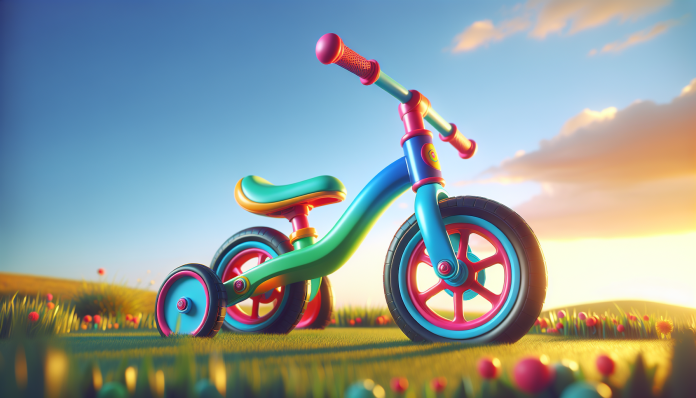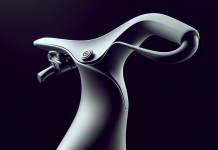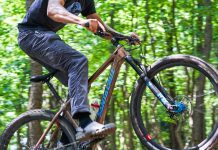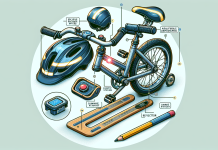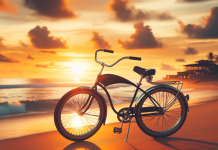In the world of learning to ride a bike, there’s one tool that’s been taking toddlers by storm – balance bikes! These innovative two-wheelers have revolutionized the way children develop their balance and coordination skills. With their feet firmly planted on the ground, little riders effortlessly glide along, gaining the confidence they need to eventually pedal their way to independence. Join us as we explore the wonders of balance bikes and uncover why they’re the perfect first step in the exciting journey of bike riding.
Table of Contents
Overview of Balance Bikes
Balance bikes have become increasingly popular among parents as an ideal tool for teaching their toddlers how to ride a bike. These innovative and pedal-less bicycles are designed to introduce young children, typically between the ages of 18 months and 5 years, to the concept of balance and coordination in a safe and enjoyable way. Unlike traditional tricycles or bikes with training wheels, balance bikes allow toddlers to use their feet to push and glide, encouraging them to develop essential motor skills while having fun. In this article, we will explore the benefits of balance bikes for toddlers, how to choose the right one, the importance of finding the perfect fit, safety measures to consider, the role of balance bikes in developing coordination and gross motor skills, their positive impact on building confidence and independence, and the eventual transition to a pedal bike.
Benefits of Balance Bikes for Toddlers
Developing Balance and Coordination
One of the key benefits of balance bikes is their ability to foster the development of balance and coordination in young children. By using their feet to propel themselves forward, toddlers learn to maintain a stable center of gravity and adjust their body position in response to shifts in weight. This innate sense of balance acquired through the use of balance bikes lays a solid foundation for future activities that require coordination, such as riding a traditional bicycle, skateboarding, or even participating in sports.
Improving Gross Motor Skills
Balance bikes are also excellent tools for improving gross motor skills in toddlers. The act of pushing off the ground and gliding encourages children to use their entire body, particularly their legs and core muscles, to maintain stability and control. As they become more comfortable with the bike, toddlers start to gain confidence in their ability to navigate various terrains, steer, and maneuver around obstacles. This enhanced coordination and physical capability gained through riding a balance bike can have a positive impact on other physical activities and sports that toddlers may choose to engage in as they grow older.
Building Confidence and Independence
Balance bikes offer an invaluable opportunity for toddlers to build confidence and gain a sense of independence. As they learn to balance and ride on their own, without the need for training wheels or adult support, toddlers develop a sense of self-reliance and accomplishment. The process of mastering a balance bike instills a can-do attitude and a belief in their own abilities, which carries over into other aspects of their lives. This newfound confidence can contribute to improved self-esteem, resilience, and a willingness to tackle new challenges in the future.
Choosing the Right Balance Bike
When it comes to choosing the right balance bike for your toddler, several factors should be taken into consideration. Firstly, ensure that the bike is lightweight and easily maneuverable. Toddlers are still developing their motor skills, so a heavy or bulky bike might hinder their progress. Additionally, look for an adjustable seat height that allows for growth. Ideally, the seat should be low enough for your child to plant their feet firmly on the ground while seated, ensuring stability and control. As your toddler grows, gradually raise the seat height to promote proper leg extension and an optimal riding posture.
Another important aspect to consider is the bike’s build quality and durability. Toddlers can be quite adventurous and prone to accidents, so opt for a balance bike made from sturdy materials that can withstand the wear and tear of regular use. Furthermore, ensure that the handlebars are easy to grip and maneuver, as this will contribute to your child’s overall riding experience and control.
Finding the Right Fit
Finding the right balance bike fit is crucial to ensure your toddler’s safety and comfort while riding. Begin by measuring your child’s inseam, which is the distance from the ground to the crotch area. This measurement will help you determine the appropriate seat height for the balance bike. As a general guideline, choose a balance bike with a seat height that allows your child to have both feet flat on the ground when sitting. This will provide a stable platform and allow them to easily control the bike while gaining confidence.
Additionally, consider the weight and size of the balance bike. It should be proportionate to your toddler’s physical abilities and strength. If the bike is too heavy or too large, it may hinder their progress and lead to frustration or accidents. It is also worth noting that some balance bikes come with adjustable handlebars, allowing for a more customized fit to accommodate your child’s arm length and riding style.
Safety Measures for Toddlers
While balance bikes are generally considered safe for toddlers, it is important to implement certain safety measures to ensure their well-being during rides. Firstly, always make sure your child wears a properly fitted helmet when riding their balance bike, regardless of how short the ride may be. This habit will instill the importance of safety from an early age and protect their head in the event of a fall or collision.
Secondly, choose appropriate riding locations that are free from traffic and potential hazards. Parks, empty parking lots, or designated bike paths are ideal environments for toddlers to practice riding their balance bikes. Supervise your child closely, particularly in the beginning stages, to prevent accidents and guide them in navigating the surroundings safely.
Finally, encourage your toddler to wear closed-toe shoes and knee/elbow pads to provide extra protection for their extremities. Learning to ride a balance bike involves falls and bumps, so it is best to be prepared and minimize the risk of injuries.
Transitioning to a Pedal Bike
As your toddler becomes proficient in riding their balance bike and develops a solid sense of balance, coordination, and confidence, the next natural step is transitioning to a pedal bike. The skills acquired from riding a balance bike set a strong foundation for pedaling, steering, and braking, making the transition to a traditional bike much smoother and less intimidating.
When introducing a pedal bike, opt for one with training wheels initially to help your child adapt to the new mode of propulsion. Allow them time to practice pedaling and maintaining balance with the stability provided by the training wheels. Gradually, as their skills progress, remove the training wheels and encourage them to rely solely on their abilities.
Patience and support are key during the transition phase. Toddlers may initially struggle to coordinate pedaling, balancing, and steering simultaneously, but with practice, they will become more comfortable and independent on their pedal bike.
Conclusion
Balance bikes are truly remarkable tools for toddlers to learn how to ride a bike, develop essential motor skills, improve coordination, build confidence, and gain independence. Choosing the right balance bike, ensuring the perfect fit, implementing safety measures, and eventually transitioning to a pedal bike are all important steps in this journey. With patience, encouragement, and an emphasis on fun, parents can help their toddlers embark on a lifelong love for cycling and embrace the many benefits that balance bikes offer.

